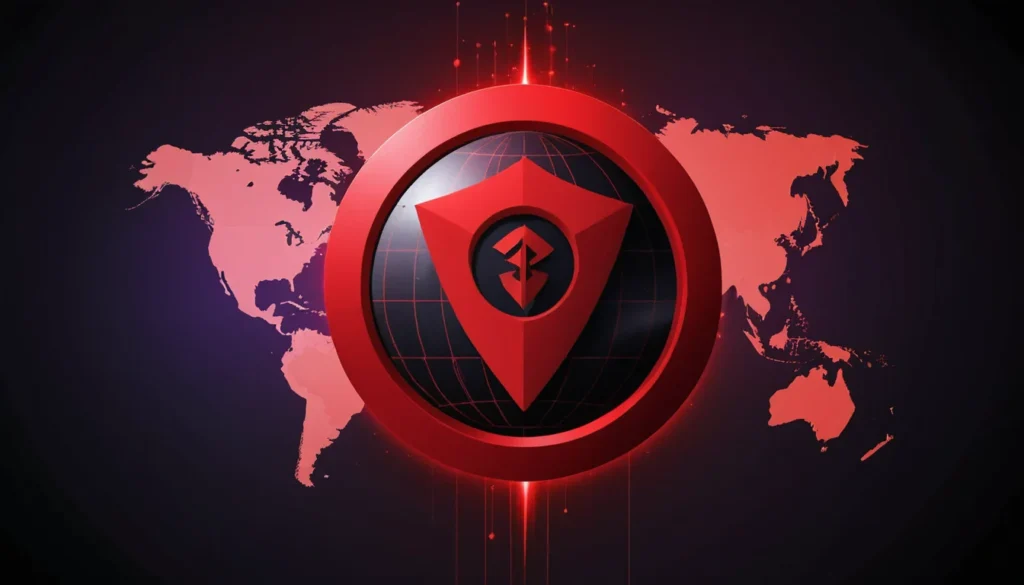Overview
SentinelOne Global Outage Raises Red Flags in Cybersecurity
On June 2, 2025, SentinelOne, a major player in endpoint cybersecurity, experienced a global service disruption. Customers across sectors were left scrambling as their endpoint detection and response (EDR) tools went offline. After intense investigation, SentinelOne confirmed that an internal software error — not a cyberattack — caused the widespread issue.
This incident underscores the fragility of even the most trusted cybersecurity infrastructure, raising concerns about operational resilience and the growing dependency on automated security platforms.
Key Facts About the SentinelOne Global Outage
- Date of Outage: June 2, 2025
- Impact Scope: Global – affected enterprise EDR and XDR services
- Duration: Approximately 6 hours of service disruption
- Root Cause: Internal software update error, not external cyberattack
- Company Affected: SentinelOne (NYSE: S)
- Response: Rollback of faulty update, emergency patch deployment
- Users Affected: Thousands of enterprises and managed security service providers (MSSPs)
What’s Verified and What’s Still Unclear
✅ Confirmed:
- SentinelOne confirmed via its status page and a public press release that the outage stemmed from an internal software bug introduced during an automated update to their core detection engine.
- There is no evidence of a cyberattack or breach.
- The company successfully rolled back the update and restored services.
❓ Still Unclear:
- Whether SentinelOne’s quality assurance and testing protocols were bypassed or failed.
- The financial and reputational impact on MSSPs and enterprise clients.
- Internal accountability or restructuring in engineering and product teams.
Timeline of Events
June 2, 2025 (08:00 GMT) – Users report endpoint services going offline. Monitoring dashboards stop updating.
June 2, 2025 (08:30 GMT) – SentinelOne acknowledges issue via its status page.
June 2, 2025 (10:00 GMT) – Internal investigation points to a configuration failure in an automated update.
June 2, 2025 (11:45 GMT) – SentinelOne begins rolling back the update.
June 2, 2025 (14:00 GMT) – Services begin restoring gradually.
June 3, 2025 (01:00 GMT) – Full operational status restored.
June 3, 2025 (15:00 GMT) – Public statement released detailing cause and mitigation.
Who’s Behind It?
There is no threat actor behind the SentinelOne Global Outage. Unlike previous incidents linked to threat groups or ransomware gangs, this event resulted from an internal configuration oversight. It involved a malformed logic rule in SentinelOne’s automated threat detection engine, which inadvertently caused CPU exhaustion and system halts across clients.
Public & Industry Response
Security professionals, CISOs, and IT teams expressed both relief and frustration. Relief that it wasn’t a malicious attack — but frustration at the loss of visibility and control during a critical workday. On social media, cybersecurity experts questioned the company’s internal testing procedures.
Stock analysts reported a dip in investor confidence, with SentinelOne shares falling 4.2% intraday following the outage, reflecting broader concerns about operational maturity and crisis management.
What Makes This Incident Unique?
The SentinelOne Global Outage is unique because it wasn’t caused by a threat actor, infrastructure attack, or supply chain compromise — but by the company itself. In a landscape where most incidents stem from malicious activity, a self-inflicted error of this magnitude from a cybersecurity firm is rare and alarming.
Moreover, the global scale and lack of fallback options exposed a serious single point of failure for many companies relying solely on SentinelOne’s EDR and XDR services.
Understanding the Basics
What is SentinelOne?
SentinelOne is a prominent cybersecurity vendor offering AI-powered endpoint protection, extended detection and response (XDR), and incident response automation. Trusted by enterprises and governments, the platform provides real-time threat detection using machine learning models deployed across thousands of devices.
But even such cutting-edge automation can backfire when internal governance or update pipelines aren’t adequately safeguarded — as this outage proves.
What Happens Next?
SentinelOne has pledged to review and overhaul its internal update testing and deployment protocols. It has also initiated direct outreach to major clients with impact reports and proposed remediation steps.
In the coming weeks, expect:
- A formal post-mortem report
- Platform hardening measures
- Additional redundancies and rollback safeguards
- Enhanced QA processes
- Temporary suspension of automated updates in high-sensitivity environments
Industry observers also anticipate scrutiny from government regulators, especially in jurisdictions where SentinelOne services critical infrastructure or healthcare clients.
Summary
The SentinelOne Global Outage is a wake-up call for the cybersecurity industry. Even the protectors need protection from their own code. While there was no malicious intent, the resulting disruption highlights how software reliability is now as critical as cyber defense.
Organizations should take this as an opportunity to revisit their incident response plans, ensure vendor diversity, and invest in backup visibility solutions. In the interconnected world of modern cybersecurity, no platform — no matter how advanced — is immune to failure.
